A Complete Guide on How to Develop a Brand Identity
2024-08-15 13:19:25
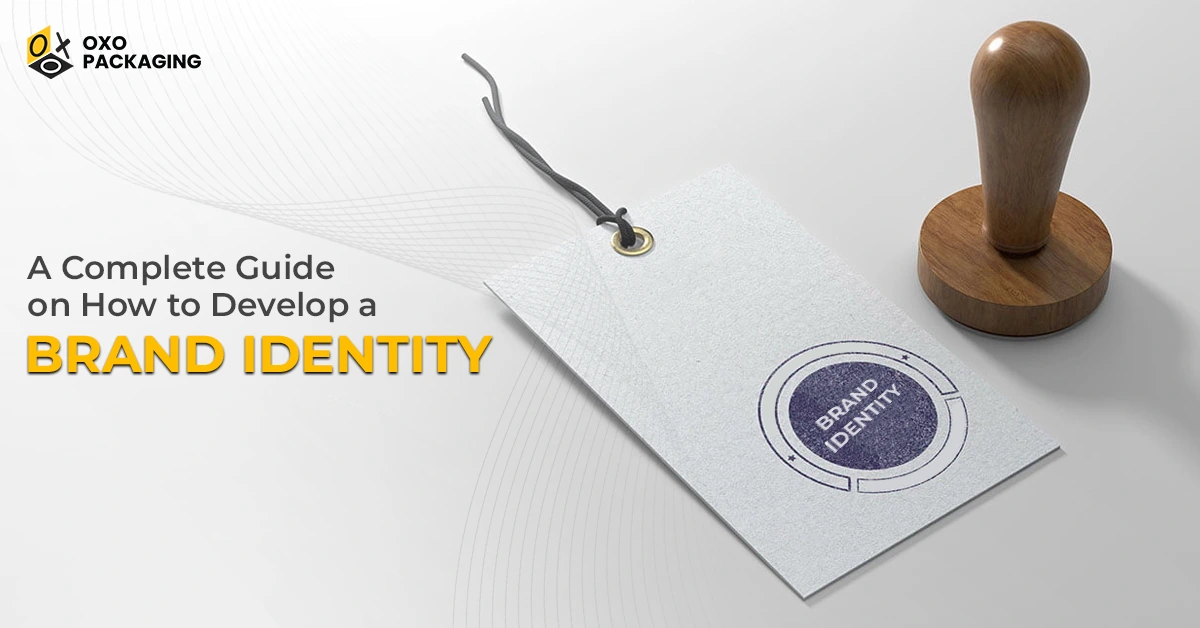
Developing a brand identity can be frightening, especially for new business owners. From brand name to logo, it requires a deep understanding to write down your vision. You want to turn your business into a meaningful entity that lives in your audience's minds. But How?
Read this blog and learn how to develop your brand identity step-by-step and create a memorable brand your consumer will love.
Let's get started!
What is a Brand Identity?
Brand identity is a collection of elements that define how a brand is perceived by its audience. It encompasses everything that represents a business's existence and shapes how people recognize it.
A successful branding strategy goes beyond just creating a logo or visual identity—it’s about crafting a comprehensive strategy that defines your business and makes it stand out.
From articulating your mission and vision to developing marketing collateral, your brand identity forms the overall perception of your business, leaving a lasting impression on your customers.
Achieving a unique shape, design, or mark through custom packaging is crucial for securing a distinctive place in the market. Experts have varied definitions of brand identity; for some, it represents the power to influence customers and audiences, while for others, it consists of mental associations that enhance the perceived value of a product or service.
How is Brand Identity Different from Brand Image?
Brand identity and brand image are not the same, they depict different meanings. Brand identity exudes the perception of core values set by the companies, whereas the brand image is set by the influencers and customers through satisfaction. In detail, the corporate image of any brand is what people say about them. An identity is the parameters you set for its unique attribute.
Let’s clearly understand from the image given below:
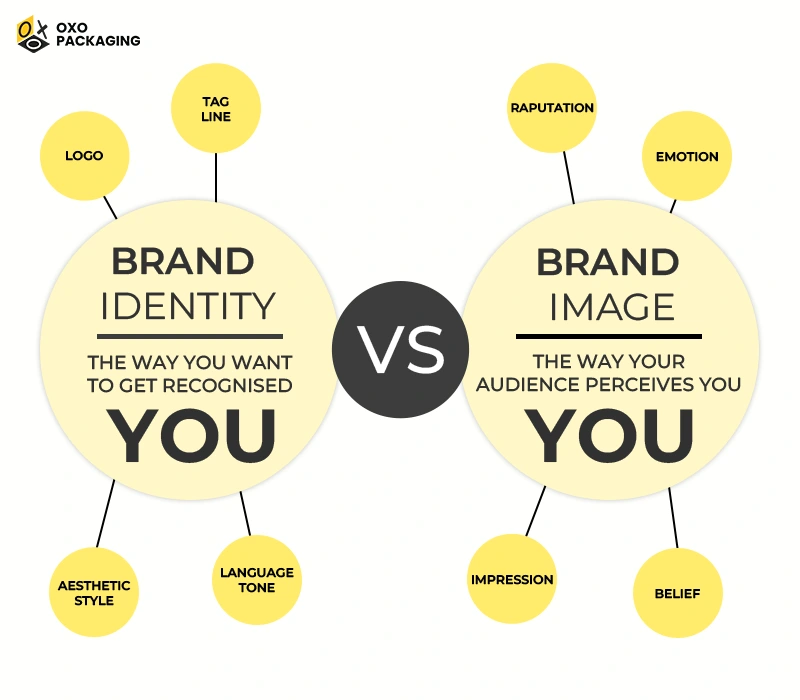
Importance of Brand Identity
The brand identity encompasses the different elements of recognition such as logos, colours, images, names, and more to set their offerings apart. You need these assets to set persuasive values that make your brand memorable.
Keep in mind that crafting a unique brand identity is as important as developing new products or offering innovative services.
In any industry, there might be a lot of competitors who offer the same products and services. So, staying in the competition requires a lot of effort and a specific identity to grab more attention.
An effective branding strategy increases awareness about your product which wins the favour of your target audience.
5 Key Considerations Before Developing Your Brand Identity
Branding can be challenging if you don’t lay down a strategy that utilises your personal experiences and highlights your brand’s vision and mission. Here are a few key considerations that are important to help you develop your brand identity easily:
Conduct Thorough Research
The first thing is to know what your competitors are doing and perform a deep analysis of their branding strategies to craft yours.
Stay updated about your competitors so you can plan one step ahead from them and always keep a competitive advantage. Ensure you test the products/services of other businesses. Doing so will enable you to update your offerings as per the changing demands of the industry.
Knowing about the strategic landscape of your industry will help you weave a brand identity that sets you as the thought leader and helps you achieve your business goals faster.
Know Your Audience
Identifying your target audience in terms of their behaviour, usage, interest, and more is a crucial step to developing your brand image. To make your customers emotionally attached to your products, you must adapt to your intended audience.
Ask yourself a few questions:
Do your audience's interests align with your products?
What does your audience think?
Why do they need your product?
The answers to these questions will help you find the strategy to link your brand identity with consumers.
For example, if you run a soap business, you will need to make an educated guess about your audience’s needs. You will have to develop everything from persuasive social content to attractive soap packaging to attract more prospects and boost sales.
Know the Reason of Your Existence
You need to clearly state the vision and mission of your business. As there is a reason behind everything a person does, you need to apply this principle to your business journey and eke out the purpose of starting your business. Make your vision and purpose actionable that sets you apart from the competition.
For this purpose, you can define unique selling propositions (USPs) from the in-depth insights from the competitive analysis. Turn their gaps into your unique selling point to differentiate your business from them.
Defining your business’s purpose is also important if you plan to rebrand your identity. Performing a rebrand with a fresh outlook will help you persuade those segments of your audience who didn’t try out your offerings in the past.
Determine the Company’s Mission & Values
Establishing your organisation's mission and ethos helps you clarify the moral path for both internal and external growth. Set your business foundation to make wise decisions for your business to handle challenges and seek opportunities.
Document your milestones and define your goals to achieve them adequately. This will help you to stay aligned with your business purpose and accomplish your setting objectives.
Applying persuasive stickers on office items is a fun way to keep yourself and your team focused on your business’s mission and vision. Or you can try hang wall posters of quotes and images that align with your business persona.
Create the Archetypal Mix for your Brand
The branding archetype represents the brand as a persona based on values and more for building emotional connections with targeted audiences.
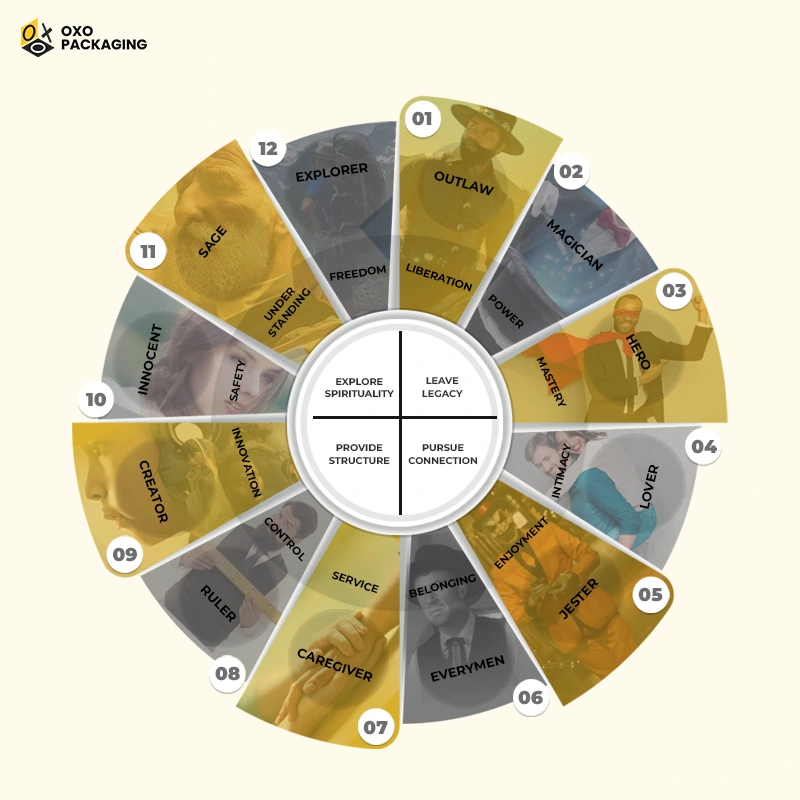
When you identify your audience's interests and your business objectives, listing an archetypal mix for your brand can be easier. Creating this for your brand helps you create “the explorer term” for your audience to make them feel connected with your brand.
The two mixed archetypes would be better for the brand for pinpointing your message and clarifying your voice.
Understand Brand Personality Models
Brand personality frameworks are the characteristics that define your brand within precise different dimensions to elaborate a broader vision. Here are different types of structures that help you develop your brand identity:
The Market And Brand-Oriented Framework
The market-oriented framework uses an outside-in approach to design the product while the brand orientation is an inside-out approach to imply decision-making based on its brand identity. The market and brand-oriented framework emphasises the central focus which is customers.
This is known as “The Egg Model” which appears as two different strategic models but a combination can be possible. For example, Dell's initial consideration matches this model as their central focus on customers.
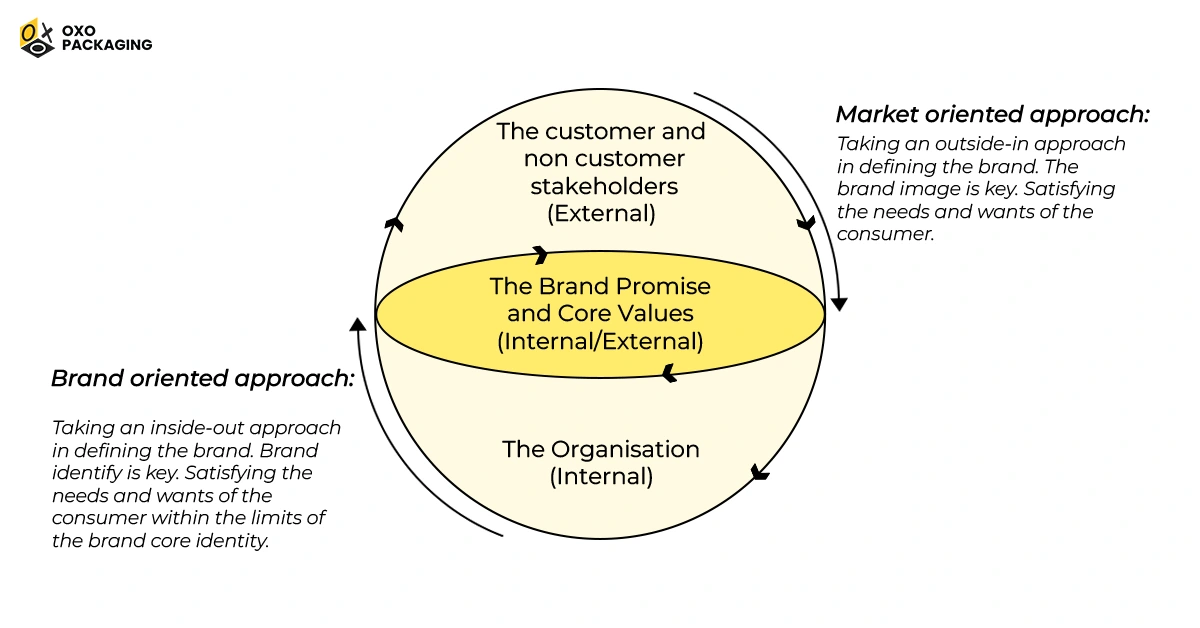
Brand Identity Prism
This is the second framework where you define your brand's core values so your target audience recognizes your brand instantly. Make your brand personality in a way that resonates with the customers quickly. For example, Disney's brand personality strategy revolves around their consumers' present lives by developing memorable characters.
According to this model, your brand asset must reflect the customer's perception such as moral values, honesty, and integrity.
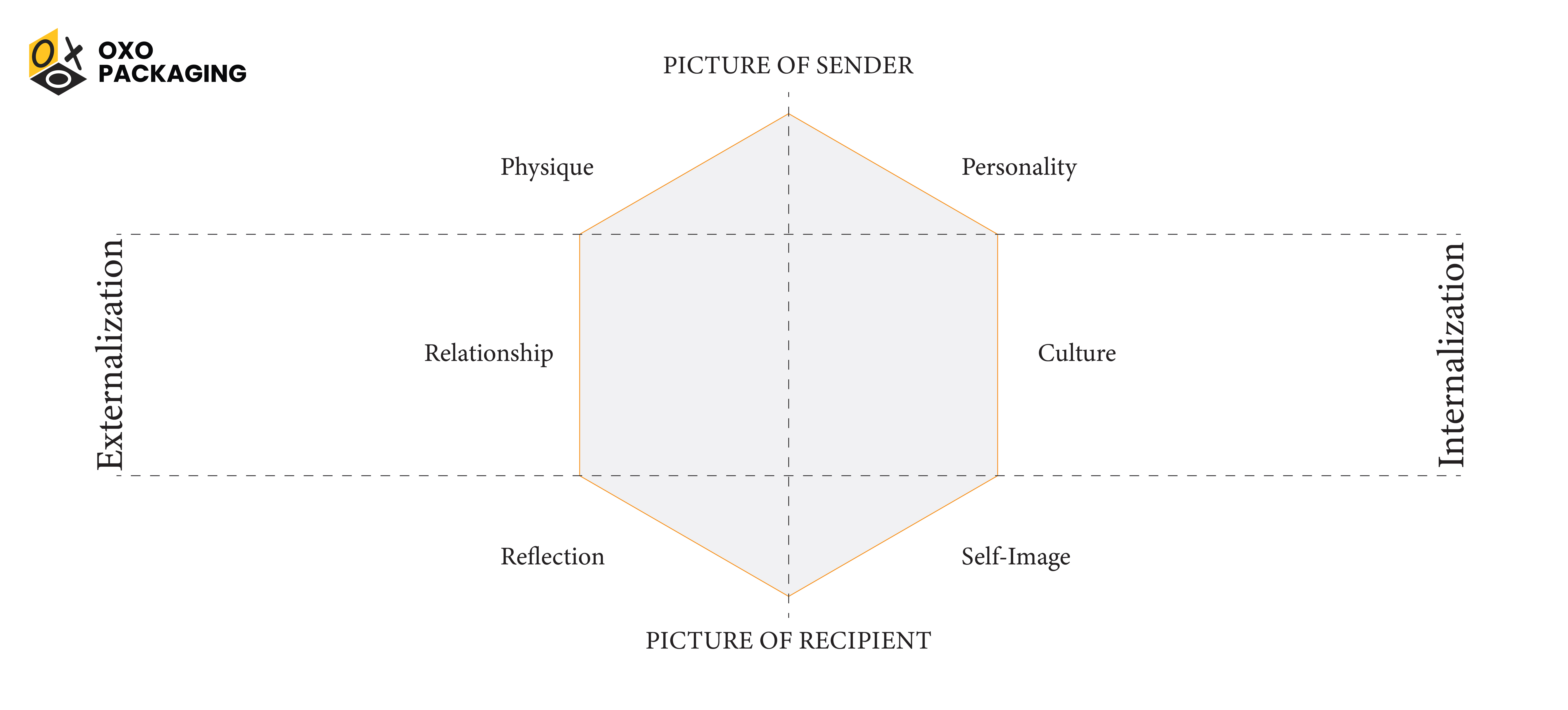
Corporate Brand Identity Model
The third framework for creating a brand identity is CBIM (Corporate Brand Identity Model) which helps you define your 9 brand elements to examine aspects of recognition. It represents in the form of matrices that address your problem in a set of questions and list solutions to make your unique brand identity.
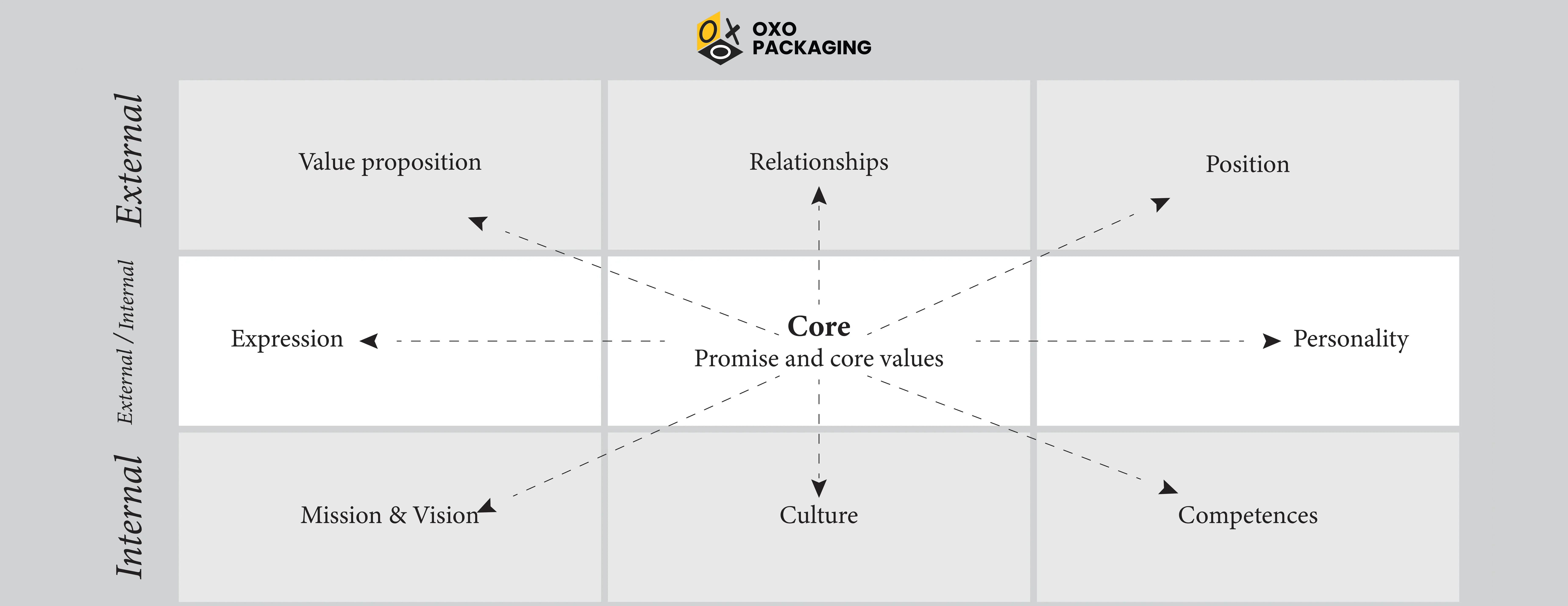
The Aaker Model
Under this framework defined by Aaker and his daughter, you can develop a closer relationship between your company and customers to focus on the thoughts of customers to define your brand’s attributes. Let’s take a look at this business example: McDonald's is listed in an “Excitement” position as they focus on making food enjoyable so everyone wants to have their food and they sell more products.
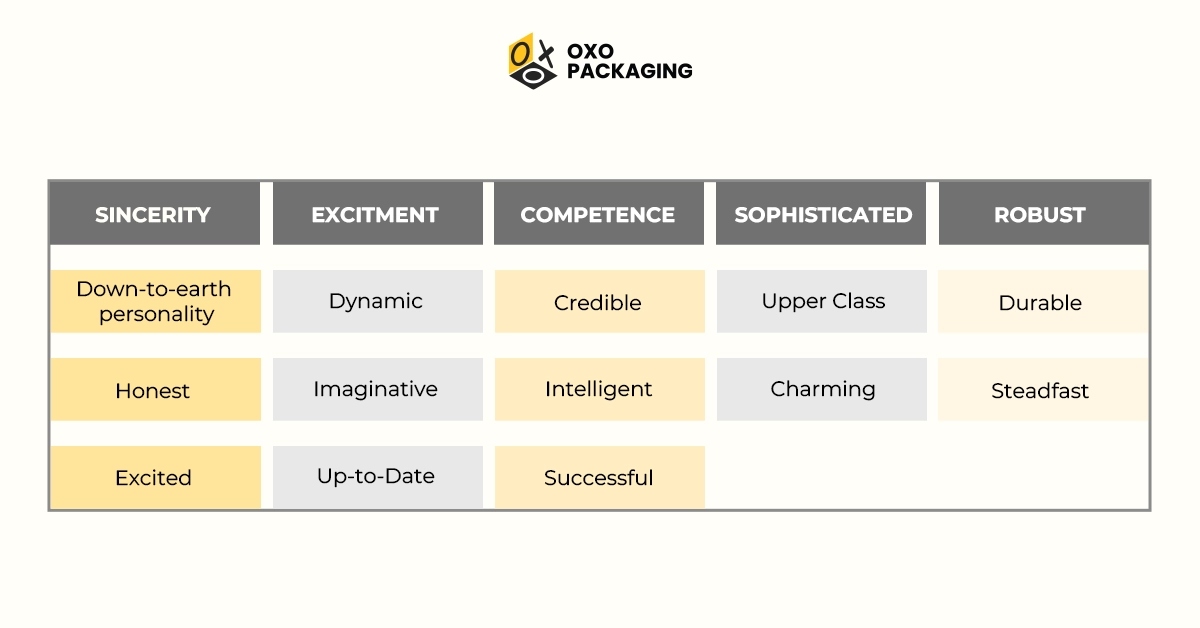
Here are 5 brand personalities from which you can identify yours:
Sincerity: You will see sincerity in many food brands as their primary attributes are honesty, down-to-earthness, and generosity.
Excitement: Youth brands are appealing to youngsters as they refer to having the characteristics of joyfulness, dynamism, and coolness.
Competence: Versatile brands have this personality as they are reliable, responsible, and credible enough to deal with crucial stuff.
Sophisticated: Brands like Versace and Bugatti come to mind when we discuss luxurious, glamorous, charming, and upper-class products and services.
Robust: FedEx and Google have traits of authenticity, strength, and durability that make these brands identified as being “robust” among consumers.
6 Basic Elements to Create A Brand Identity
A brand identity document usually consists of some elements that are labelled as “brand collateral.” Knowing about these elements is important whether you’re developing a brand identity from scratch or want to rebrand your existing business.
Here are the six major elements that develop your brand identity:
- Name: Choose a unique and distinctive brand name that would be easy to remember for your audience. Go beyond your imagination and research thoroughly to choose a business name that sticks to your consumer's minds.
- Colours: Always define unique colour palettes that make your brand easily recognizable. For example, red and two gold lines make someone instantly remember the famous food brand McDonald's. Stay consistent and efficient while choosing a brand colour scheme.
- Typeface: Keep in mind that typography is the art of placing text in your logo that is used in a brand to evoke different emotions. Choose a unique text typeface to leave an everlasting mark on your solo identity.
- Shapes: Create and link your business story behind choosing a shape for your brand. For example, Nike selected the curved shape for their brand identity which represents the speed and movement that perfectly align with their shoe brand.
- Logo: Your logo must compel your brand narratives that strengthen your recognition in the market. Take your time to think about what you are doing, what your purpose is, and how it will go. Hire professional logo designers for this purpose.
- Tone of Voice: This is the component that decides your brand influence and how customers will perceive your brand essence. Tone refers to used language, image, and representation to convert your brand into any personality from the archetypal mix.
Before starting to design your logo based on these elements, understand the types of logos and taglines that help you stay aligned with your brand narrative. Here are these in detail:
-
Types of Logos – Learn Basic Essentials
- Types of Taglines – Get the Perfect One
Types of Logos – Learn Basic Essentials
Your logo is the first thing your customers will see and perceive your brand identity. When it comes to a logo, it is a symbol or shape that is used to define your business. You need to know its basic essentials and types that help you during its design.
Lettermark
This type of logo consists of letters, usually the brand initials. It makes perfect sense for customers to get through your brand by reading acronyms. The brands that have longer names are perfect to use this lettermark style logo by choosing the name initials, the perfect example is BMW.
Mascot
It is a fun-based logo derived from the illustration of characters and animation to give strong brand recognition. Create a logo that your business does and have a professional designer who has an eye for detail. Establish your brand with these fun mascot icons to make them recognized instantly. Create a spoken person or character for your brand to appeal to kids and families.
Emblems
Emblems are usually classic and are a great way to represent your brand to evoke feelings of great value. This type of logo gives a more professional look to your brand. For example, BMW and Starbucks are great examples of emblem logotypes.
Abstract
It is a specific type of pictorial logo, like a bird, which is the abstract mark for the logo. This type of logo represents your brand in a single image. Using an abstract logo allows you to create what your company does symbolically. They are versatile and used to represent language barriers with complex shapes. For example, the Nike and Shell logos are ideal examples of abstract types.
Types of Taglines – Get the Perfect One
Defining a tagline helps you develop your brand strategy to convey your brand message for consumers' inspiration. Tell them who you are with these amazing taglines. Customers help you recognize your brand with these effective taglines. Here are the types of taglines that help you increase your brand recall:
Corporate
A memorable motto or phrase that helps your internal business with an amazing tagline to connect your customers with the company. These are superlative taglines that allow you to set premiums for your brands. You can create a lasting impression on customers' minds to make your brand popular. These are based on the experiences which give the customers to feel associated with your brand.
Campaign
These are the taglines that are developed during specific campaign times to make your brand stand out. You need to strive to be unique and consistent to create a classy tagline that quickly reminds your customers about your campaign message. These can be a one-liner description of your brand essence. Keep them short to make them memorable for your customers.
Logo Underline
Such taglines help to fill the gaps if your logo doesn't help the customers recognize your brand. Writing your precise taglines under the logo states the brand vision. These slogans convey the brand identity itself to your audiences effectively. You can use inspiring words under your logo to connect your brand with consumers.
Branding Deliverables
In simple terms, branding deliverables are a set of marketing collateral that you can use and repurpose for your branding and marketing communications.
These branding deliverables are not just simple outcomes, they require a set of rules to make a consistent branding positioning in the marketplace. These documents need to be labelled correctly for later use or edits for rebranding identity. Here are these documents or files are the brand identity guidelines for visual recognition:
Logo Usage
The logo file you create can be in different formats such as PNG, SVG, or JPG to increase flexible usage. Keep them with the correct label within comprehensive brand identity guidelines. You can make edits and changes after a particular use in the future.
Colour Palette
Within your brand guidelines document, the colour palette refers to the purpose of every colour used in the visual representation. When your brand markets repeatedly in the same colour palette, it shows your consistency. Organised these brand guideline documents clearly to use the same colours in advertising campaigns to avoid inconsistency.
Typography
Your font style for brand identity must be consistent and unique. These files can support various formats such as Word, and PowerPoint for creating other brand material to meet consistency and strengthen your brand recall.
Graphic Elements, Patterns, and Devices
Completing your brand identity with robust documents or guidelines including graphics elements such as images, textures, or patterns ensures the consistency of your brand application and makes it feel cool and confident.
You need to maintain these professionally crafted brand identity guidelines for future use, in case you need to rebrand your identity. It helps you attract new audiences as mindsets and trends change with time.
Make sure your branding elements are materialised the right way. For example, if you are thinking about getting custom packaging for your brand, you should pick a safe option like cardboard packaging boxes to ensure your brand identity is conveyed through packaging the right way.
Note: If you don't want to experiment with the design of your brand identity, you need to hire professional designers if you are looking for trust, recognition, and memorability.
Rebranding Examples
Rebranding is the process brands go through when they are looking for a change or transformation to grab new audiences. This strategy is essential to stay competitive in a fast-paced world. It is a marketing strategy to keep your brand up-to-date by changing your logo, colour palette, tagline, and more elements.
Here are a few examples that help you find why rebranding is crucial to staying relevant among competition.
Case 1: UEFA’s Star-Power
UEFA’s Star-Power is a rebranding campaign that is intended to make an everlasting impression on football fans. Here’s how they planned their rebranding move:
They used an illuminated ball logo in star shapes to surprise their audience to perceive something spectacular happening on the screen. This was an award-winning strategy before launching their league's theory that connected a huge audience with them.
Case 2: Facebook
The famous and popular change that every user remembers when they announced changing their name to Meta. They shifted to owning multiple social media channels and making one big platform named Metaverse company.
The ideology behind this concept was to adopt virtual reality to change and enhance user experiences. It was quite an interesting and bold move to stay ahead of the competition to get more attention from users.
Case 3: GAP
GAP is a famous apparel company in America. They faced a setback resulting in the aftermath of the financial crisis in 2010. The brand believed that the answer to their woes was to rebrand their identity. Nothing went wrong after this decision, which created an impactful change to their comeback in 2015.
They changed their colour palettes, logos, and images to recreate their identity once again in the marketplace. They got back on track after their rebranding move.
Case 4: Nokia
When you hear the mobile brand Nokia, what comes to your mind is its durability and “Stay Connected” tagline. This brand decided in 2014 to overhaul its brand identity to make a fresh comeback in the crowded marketplace.
The strategy behind their bold move of rebranding consists of changing colours and logos to make a huge impact on their customers. They slightly shifted their brand identity as the complete overhaul might be time-consuming and expensive.
Conclusion
Building a brand identity requires a lot of attention and elements to leave a lasting impression on consumers' minds. We hope this blog has helped you learn how to develop a brand identity from scratch.
Ensure you develop your plan according to the tips shared above to resonate with your target audience. Or reach out to us if you still have questions at adam@oxopackaging.com.au, as we’d love to help you get started on your branding journey!
